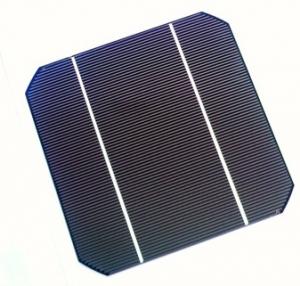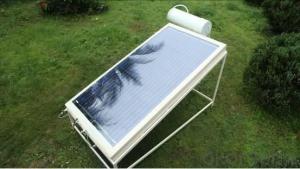Monocrystalline 3d Solar Cells-Tire manufacturers from China
- Loading Port:
- Shanghai
- Payment Terms:
- TT or LC
- Min Order Qty:
- 10000 pc
- Supply Capability:
- 50000000 pc/month
OKorder Service Pledge
OKorder Financial Service
You Might Also Like
Specifications of Mono Solar Cells
Format : 156 mm × 156 mm ± 0.5 mm
Thickness: 210 μm ±40 μm
Front (-) : 1.5mm bus bars (silver),blue anti-reflection coating (silicon nitride)
Back (+) : 2.5mm wide soldering pads (silver) back surface field (aluminium)
Electrical Characteristic of Mono Solar Cells
Efficiency (%) | Pmpp (W) | Umpp (V) | Impp (A) | Uoc (V) | Isc (A) | FF (%) |
18.35 | 4.384 | 0.526 | 8.333 | 0.63 | 8.877 | 78.39% |
18.20 | 4.349 | 0.526 | 8.263 | 0.63 | 8.789 | 78.54% |
18.05 | 4.313 | 0.525 | 8.216 | 0.63 | 8.741 | 78.32% |
17.90 | 4.277 | 0.524 | 8.161 | 0.629 | 8.713 | 78.04% |
17.75 | 4.241 | 0.523 | 8.116 | 0.629 | 8.678 | 77.70% |
17.60 | 4.206 | 0.521 | 8.073 | 0.628 | 8.657 | 77.36% |
17.45 | 4.170 | 0.519 | 8.039 | 0.628 | 8.633 | 76.92% |
17.30 | 4.134 | 0.517 | 8.004 | 0.626 | 8.622 | 76.59% |
17.15 | 4.098 | 0.516 | 7.938 | 0.625 | 8.537 | 76.80% |
17.00 | 4.062 | 0.512 | 7.933 | 0.625 | 8.531 | 76.18% |
16.75 | 4.002 | 0.511 | 7.828 | 0.625 | 8.499 | 75.34% |
16.50 | 3.943 | 0.510 | 7.731 | 0.625 | 8.484 | 74.36% |
Advantage of Mono Solar Cells
1. High efficiency and High power.
2. Long-term electrical stability.
3. Lowest price and Fastest delivery.
4. Good quality and best service.
5. Bulk supply
6. Trusted Warranty
7. Big Sale
8. More than 25 years on the lifetime.
Usage and Applications of Mono Solar Cells
Solar cells are often electrically connected and encapsulated as a module. Photovoltaic modules often have a sheet of glass on the front (sun up) side, allowing light to pass while protecting the semiconductor wafers from abrasion and impact due to wind-driven debris, rain, hail, etc. Solar cells are also usually connected in series in modules, creating an additive voltage. Connecting cells in parallel will yield a higher current;our solar cells have passed IEC Certification. With high quality and stable quality. Our Cells can greatly improve the performance of Solar Modules.
Packaging & Delivery of Mono Solar Cells
Carton Box Package and Deliver by air. It should be noticed that it should be avoid of water, sunshine and moist.
Factory Picture of Solar Cells
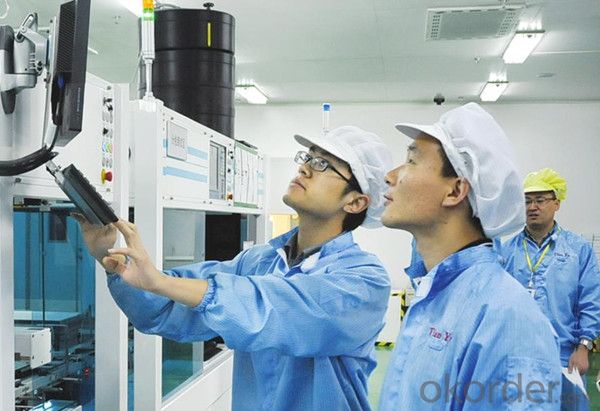
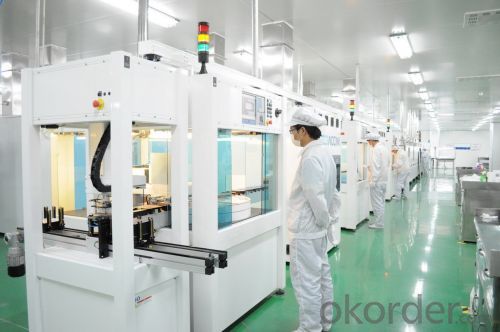
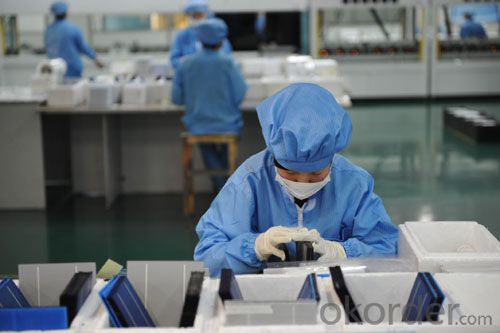
FAQ
We have organized several common questions for our clients,may help you sincerely:
A: It’s depends on the quantity, delivery date and payment terms of the order. We can talk further about the detail price issue. Our products is high quality with lower price level.
We have different series of cells with different power output, both from c-si to a-si. Please take our specification sheet for your reference.
We have rich experience on how to pack the panels to make sure the safety on shipment when it arrives at the destination.
Yes, we can.
In the purchase of product within three working days, We will arrange the factory delivery as soon as possible. The perfect time of receiving is related to the state and position of customers. Commonly 7 to 10 working days can be served.
Rumors about 3d solar cell manufacturers
Whether all 3d solar cell manufacturers are at a loss?
Truth: Some 3d solar cell manufacturers at a loss, but not all are so. Many silicon solar cell manufacturers with the same technology in the same field of competition, leading them the more difficult situation. Other areas are more profitable, such as films, elastic and lightweight solar panels fields.
With the rapid changes in business and market leadership, the 3d solar cell industry is still immature. Today we see is a traditional period of consolidation of a new industry, there are winners and losers, but the surviving players will usher in a bright and lucrative future.
In the next winner, there will be those companies of the roof and the building, because they insight into BIPV must be a rising star. Solar cells will be better integrated into the roofs and facades. The current building materials manufacturers in this field will gain market-share opportunity.
Prospects of 3d solar cell manufacturers
Solar is already a highly cost-competitive energy. Cheap, efficient batteries will certainly enhance the attractiveness, but in fact, the most abundant solar energy in sunlight, when the production of electricity, which makes it less dependent on energy compared to other energy storage solutions. In the long run, with the improvement of solar cell manufacturing technology and new light - electric conversion means the protection of inventions, national environmental and regeneration of the huge demand for clean energy, solar cells will continue to use solar radiation more practical and feasible the method can open up broad prospects for large-scale use of solar energy for the human future.
2009-2013, China's 3d solar cell production increased year by year, in which the Chinese solar cell production in 2010 increased by 117.04%, the largest increase in recent years; in 2012, China's solar cell production growth decline, only 14.11%; 2013 China cell production further expand the scale, capacity of 42GW, production reached 25.1GW. Compared with 2012, the growth rate of about 20%, production accounts for about 62% of the global total, ranking first in the world. At present, China has become the world's leading producer of 3d solar cells.
China has already overtaken Europe, Japan, being the largest world's solar cell manufacturing superpower. In the industrial layout, China's 3d solar cell industry has formed a certain gathering momentum. In the Yangtze River Delta, the Bohai Sea, the Pearl River Delta, Midwest, it has formed a unique solar energy industry cluster. By 2030, it is possible to achieve the cost of solar power down to the level of wind power.
- Q:How are solar cells manufactured?
- Solar cells are manufactured through a multi-step process that involves the production of silicon wafers, the creation of a p-n junction, the addition of anti-reflective coatings, and the assembly of electrical contacts.
- Q:How do solar cells perform in areas with high levels of radiation?
- Solar cells actually perform better in areas with high levels of radiation. This is because higher radiation levels provide more sunlight, which is the primary source of energy for solar cells. As a result, solar cells in areas with high radiation can generate more electricity and have increased efficiency compared to areas with lower radiation levels.
- Q:Can anybody tell me how to make a solar cell at home?
- I can, let me send you the instructions.
- Q:Can solar cells be integrated into building materials?
- Yes, solar cells can be integrated into building materials. This is known as building-integrated photovoltaics (BIPV) and involves embedding solar cells into various components of a building, such as roofs, windows, or walls, to generate electricity. BIPV offers a dual purpose by combining the functionality of traditional building materials with renewable energy generation.
- Q:Why and what is the low efficiency solar cell?
- Sometimes the solar cells made of bad quality silicon can cause the result that the solar cells you are using is lower efficient than when you started to use it. You might need to change some materials.
- Q:What is the impact of solar cell installations on job creation?
- The impact of solar cell installations on job creation is significant. As the demand for renewable energy continues to grow, the solar industry has experienced substantial job growth. Installing solar cells requires a skilled workforce, creating employment opportunities in manufacturing, installation, maintenance, and sales. Moreover, the development of solar projects stimulates local economies, attracting investments and creating jobs in related sectors such as engineering, finance, and construction. Therefore, solar cell installations have a positive impact on job creation, fostering a sustainable and thriving green economy.
- Q:How do solar cells perform in cloudy or overcast conditions?
- Solar cells are less efficient in cloudy or overcast conditions compared to direct sunlight. Cloud cover reduces the amount of sunlight reaching the solar cells, resulting in decreased electricity production. However, solar cells can still generate some energy in these conditions, although at a reduced rate.
- Q:What is the maximum efficiency of a solar cell?
- The maximum efficiency of a solar cell refers to the highest percentage of sunlight that can be converted into usable electricity by the cell. Currently, the highest efficiency achieved by commercial solar cells is around 26-27%. However, in laboratory settings, experimental solar cells have reached efficiencies of up to 46%.
- Q:What is the average cost of a solar cell?
- The average cost of a solar cell can vary depending on factors such as the type and size of the cell, the manufacturer, and the region. However, as of 2021, the average cost ranges from $0.20 to $0.80 per watt for photovoltaic solar cells.
- Q:What is the cost of solar cells?
- The cost of solar cells can vary depending on factors such as the type of technology, efficiency, and quality. Generally, the cost ranges from $0.30 to $0.80 per watt.
1. Manufacturer Overview |
|
|---|---|
| Location | |
| Year Established | |
| Annual Output Value | |
| Main Markets | |
| Company Certifications | |
2. Manufacturer Certificates |
|
|---|---|
| a) Certification Name | |
| Range | |
| Reference | |
| Validity Period | |
3. Manufacturer Capability |
|
|---|---|
| a)Trade Capacity | |
| Nearest Port | |
| Export Percentage | |
| No.of Employees in Trade Department | |
| Language Spoken: | |
| b)Factory Information | |
| Factory Size: | |
| No. of Production Lines | |
| Contract Manufacturing | |
| Product Price Range | |
Send your message to us
Monocrystalline 3d Solar Cells-Tire manufacturers from China
- Loading Port:
- Shanghai
- Payment Terms:
- TT or LC
- Min Order Qty:
- 10000 pc
- Supply Capability:
- 50000000 pc/month
OKorder Service Pledge
OKorder Financial Service
Similar products
New products
Hot products
Hot Searches
Related keywords

